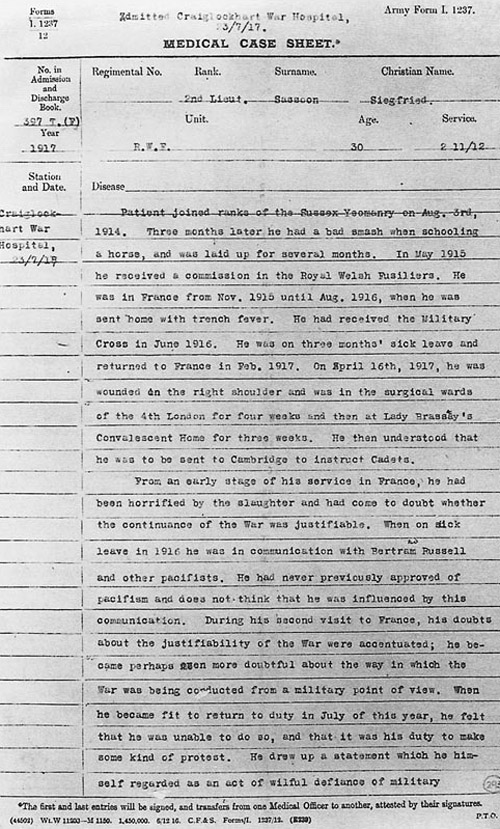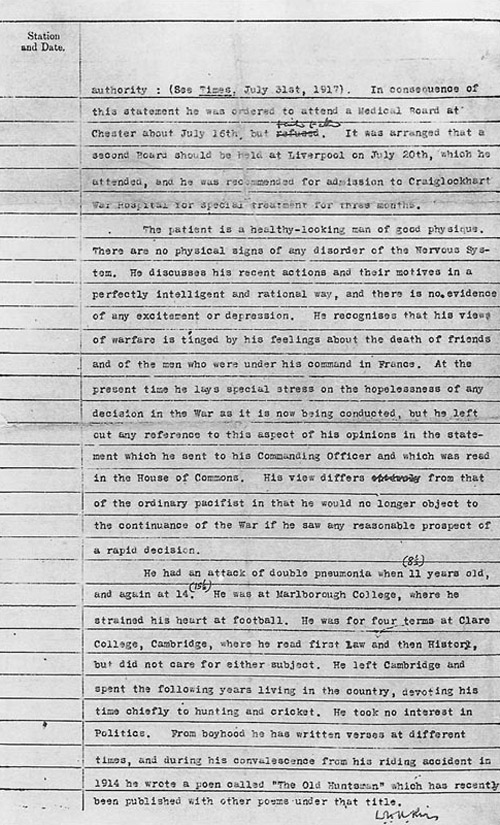1.3 The realities of war – a protest
While he was on leave, his conviction grew that those at home had little idea of the realities of war, and that the war was being deliberately prolonged by the politicians and generals who had the power to end it. He wrote a powerful statement to this effect, and sent it to his commanding officer. He also hoped that his protest would be read in the House of Commons, though fully recognizing that the punishment for this would be the enormous disgrace of a court martial and even prison.
But his protest failed. His commanding officer turned a blind eye to it. and his friends with influence in high places made sure that it was not made public at that time. Sassoon himself was sent to Craiglockhart, the medical hospital for shell-shocked officers. He actively sought to be returned to the front, and was considered sufficiently recovered to do so in 1918. His medical case sheet (Figure 1) is signed by Dr W.H.R. Rivers, who appears as a character in Pat Barker's fictional trilogy about the First World War.


At the end of the war he published his diaries and a semi-autobiographical novel The Complete Memoirs of George Sherston in which the details of his protest, and his disillusionment with the conduct of the war, were made public.
Much of Sassoon's writing serves as his personal memorial to the dead of the First World War. He continued to commemorate his brothers-in-arms by writing about them for the next thirty or more years. After publishing the last of the three volumes of The Complete Memoirs of George Sherston in 1936, he published three volumes of autobiography – the last Siegfried's Journey 1926-1930, in 1945.
